Understanding Secondary Rhinoplasty in Mumbai
What to Expect from Secondary Rhinoplasty Procedures in Mumbai
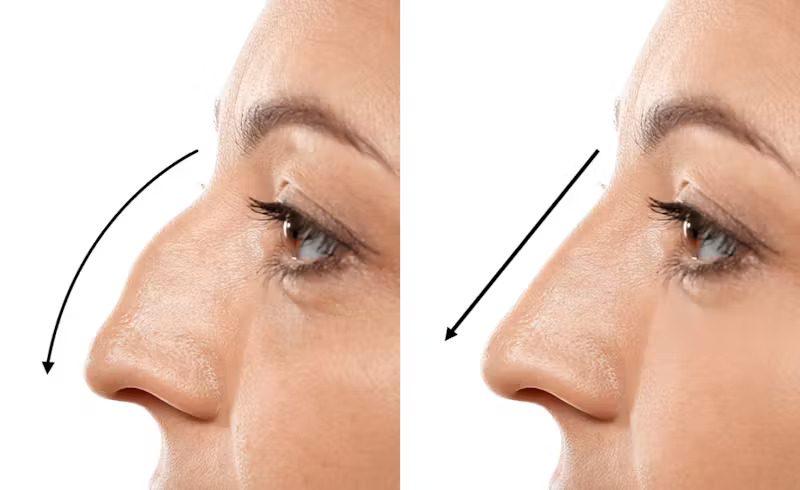
Rhinoplasty, commonly known as a nose job, is a popular cosmetic
procedure designed to improve the appearance and function of the nose. While primary rhinoplasty
can successfully address cosmetic and functional concerns, some patients may experience
complications or unsatisfactory results that necessitate a secondary rhinoplasty , also known as
revision rhinoplasty. Secondary rhinoplasty can be a complex procedure, requiring a high level
of skill and expertise to correct the issues that may have arisen from the first
surgery.
This blog will explore the essential aspects of secondary rhinoplasty, specifically
in Mumbai, one of the leading destinations for cosmetic surgery in India. We will discuss the
reasons for seeking secondary rhinoplasty , the procedure itself, what to expect during recovery,
and the importance of choosing a qualified surgeon.
Why Secondary Rhinoplasty Matters
Secondary rhinoplasty can help patients who have had unsatisfactory results from their initial rhinoplasty or those experiencing complications such as breathing problems, scarring, or asymmetry. This procedure aims to correct issues that could have been overlooked or worsened during the first surgery. Given the delicate nature of nasal structures, secondary rhinoplasty demands the expertise of a skilled surgeon who understands both the anatomy of the nose and the nuances of revision surgery.
In this blog, we will cover the following key points:
- What secondary rhinoplasty is and why it is performed
- The different techniques used in secondary rhinoplasty
- How to prepare for the procedure
- What to expect during the recovery process
- How to choose the right surgeon for secondary rhinoplasty
What is Secondary Rhinoplasty?
Secondary rhinoplasty is a corrective surgery aimed at improving the results of a previous rhinoplasty or addressing complications that arose from the first surgery. While primary rhinoplasty focuses on reshaping the nose to enhance aesthetics or improve breathing, secondary rhinoplasty involves refining or revising the previous work. This may be necessary due to issues like:
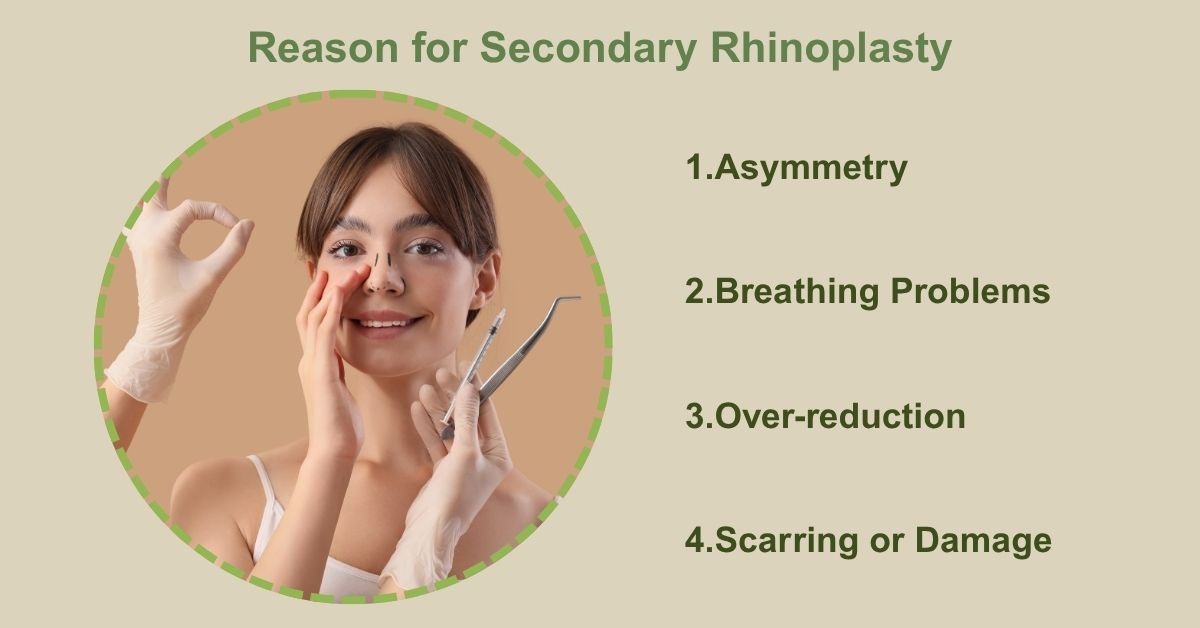
- Asymmetry: The nose may appear uneven or lopsided after the initial surgery.
- Breathing Problems: Structural issues, such as collapsed nostrils or a deviated septum, may be overlooked or worsened during the first surgery, causing breathing difficulties.
- Over-reduction: In some cases, excessive tissue removal during the first surgery can lead to structural instability and an unnatural appearance.
- Scarring or Damage: Scar tissue from the first surgery can obstruct the nasal passages or create cosmetic issues, requiring revision.
Techniques Used in Secondary Rhinoplasty
Secondary rhinoplasty often involves a more complex approach compared to primary rhinoplasty due to the altered nasal structure from the first surgery. The surgical techniques used may include:
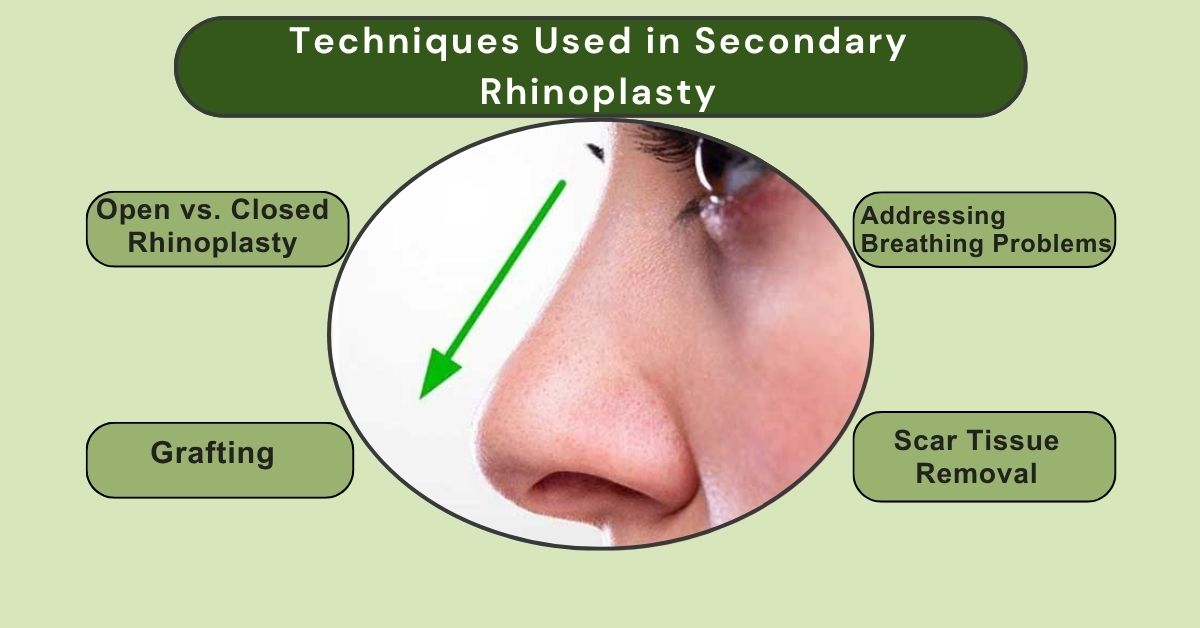
- Open vs. Closed Rhinoplasty: In secondary procedures, the open approach, where an incision is made across the columella (the tissue between the nostrils), is often preferred. This allows the surgeon better access to the nasal structures, making it easier to correct issues such as cartilage damage or unevenness.
- Grafting: In many cases, cartilage grafting may be required to reconstruct or support weakened areas of the nose. Donor cartilage is typically harvested from the septum, ear, or rib.
- Addressing Breathing Problems: If breathing issues exist due to nasal collapse or a deviated septum, the surgeon may focus on restoring the nasal airway, using grafts or repositioning nasal structures.
- Scar Tissue Removal: If scar tissue has formed from the initial surgery and is causing aesthetic or functional issues, the surgeon will work to remove or minimize the scar tissue.
Preparing for Secondary Rhinoplasty
Before undergoing secondary rhinoplasty, there are several important steps to take:
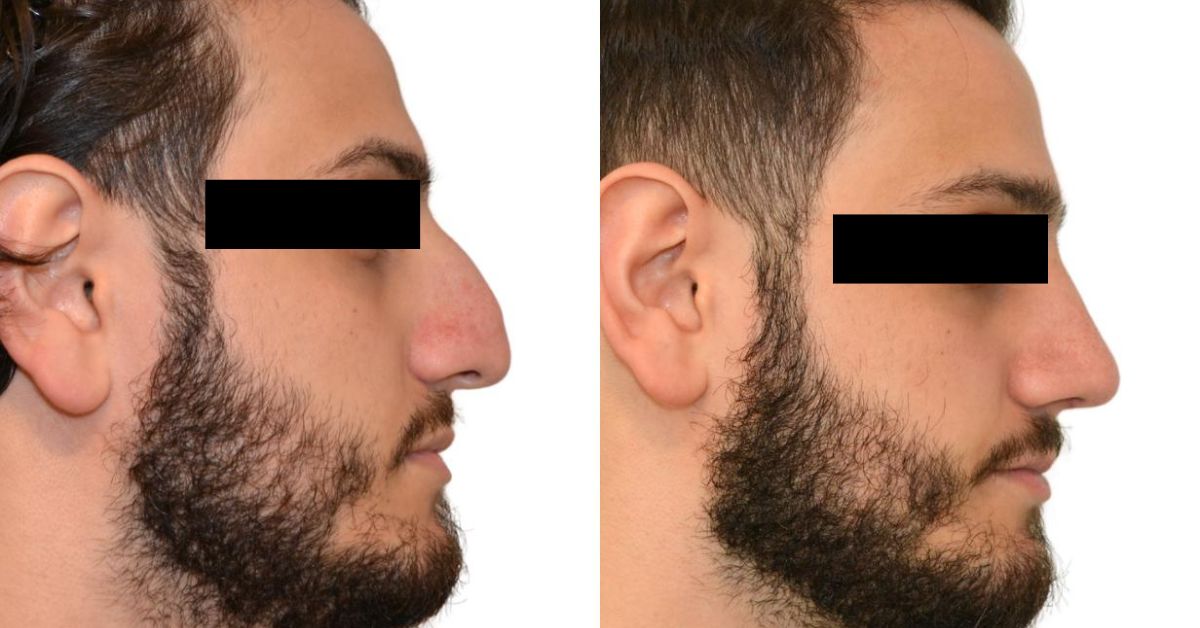
- Consultation: The first step is to consult with a qualified plastic surgeon who specializes in rhinoplasty. During this consultation, the surgeon will assess the results of your initial surgery, discuss your goals, and review your medical history. It’s essential to have realistic expectations and communicate your concerns clearly with the surgeon.
- Medical Evaluation: A thorough medical evaluation will ensure that you are healthy enough to undergo surgery. The surgeon will assess factors such as your nasal anatomy, skin thickness, and any scar tissue or damage from the first surgery.
- Post-Operative Care: Your surgeon will provide specific instructions on how to prepare for the procedure, including advice on discontinuing certain medications or supplements that can affect healing or increase bleeding risk.
What to Expect During the Procedure
Secondary rhinoplasty is typically performed under general
anesthesia, although local anesthesia with sedation may be an option for some patients. The
procedure can last between 2 to 4 hours, depending on the complexity of the case.
In some
cases, the surgeon may need to perform a cartilage graft or reconstruct the nasal framework to
achieve the desired outcome. The approach taken will depend on the issues identified during the
consultation and the goals discussed with the patient.
Recovery After Secondary Rhinoplasty
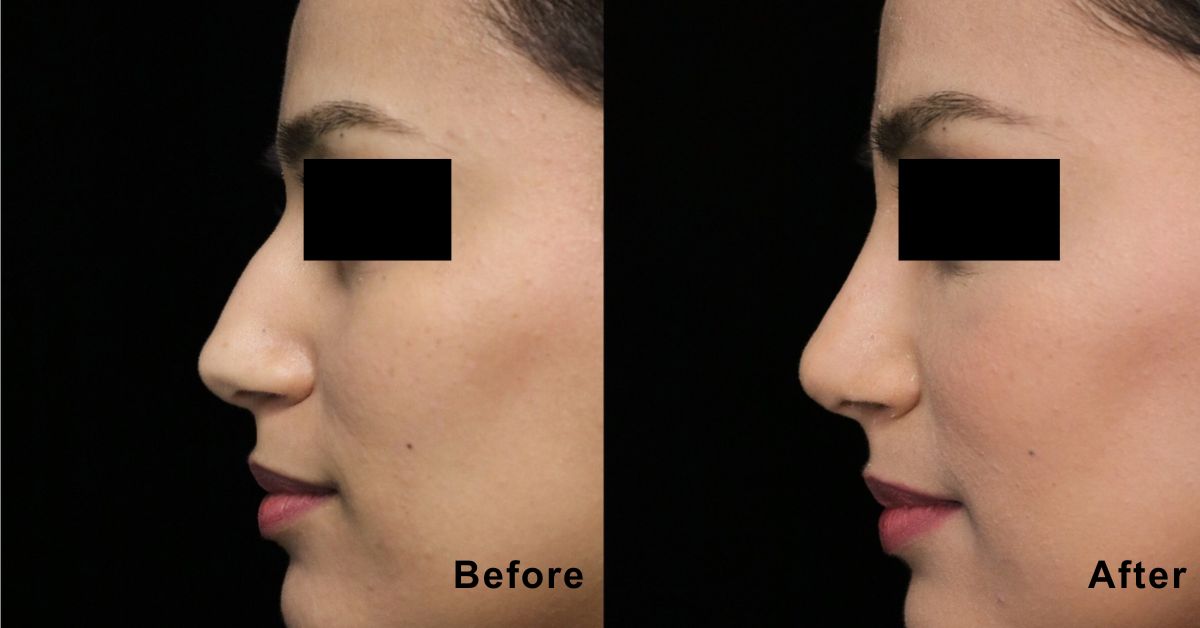
- Swelling and Bruising: Expect significant swelling and bruising around the eyes and nose during the first few days after surgery. This is a normal part of the healing process.
- Post-Surgery Care: You will need to follow your surgeon’s instructions for aftercare, which may include avoiding certain activities, applying ice packs, and keeping your head elevated to reduce swelling.
- Nasal Splints: A splint may be placed on the nose to support its new shape during the initial phase of healing. It is important to avoid touching or bumping the nose.
- Follow-Up Appointments: You will need to visit your surgeon for follow-up appointments to monitor your recovery and address any concerns. Full recovery can take several months, but you should begin to see improvements in your nose's appearance and functionality over time.
Choosing the Right Surgeon for Secondary Rhinoplasty
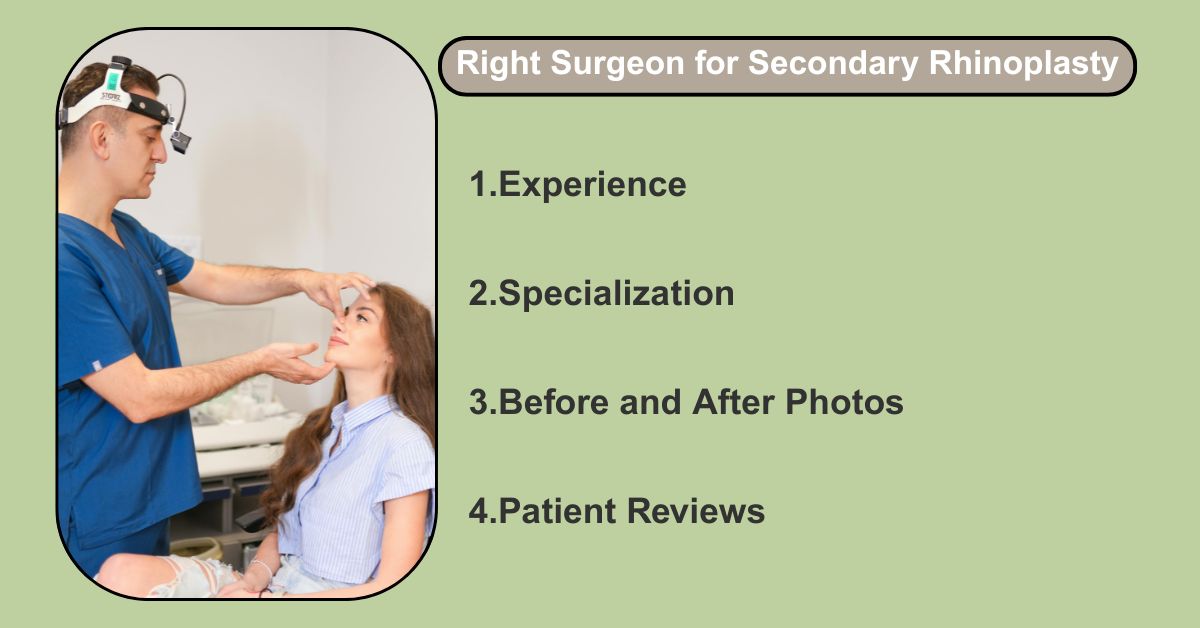
- Experience: Look for a surgeon with extensive experience in both primary and secondary rhinoplasty. Revision rhinoplasty requires specialized skills and knowledge.
- Specialization: Ensure the surgeon specializes in facial plastic surgery and rhinoplasty, particularly revision surgeries.
- Before and After Photos: Request to see before-and-after photos of previous patients who have undergone secondary rhinoplasty with the surgeon. This will give you an idea of their skill and the results you can expect.
- Patient Reviews: Read patient reviews and testimonials to gain insight into the surgeon’s reputation and the patient experience.
Dr. Vinay Jacob is a Senior Plastic and Reconstructive Surgeon with
over 25 years of expertise in complex surgeries, including secondary rhinoplasty. His
specialized skills extend to gender-affirming surgeries, hand and facial rejuvenation, nasal and
respiratory procedures, body contouring, and breast reconstructive surgery.
To book an
appointment, call or visit the clinic directly.
FAQs
Recovery typically takes 1 to 2 weeks for initial healing, but full recovery can take several months as the nose continues to settle into its new shape.
Will my insurance cover secondary rhinoplasty?Insurance may cover secondary rhinoplasty if the procedure is deemed medically necessary, such as in cases of breathing difficulties. However, cosmetic revisions are generally not covered.
Is secondary rhinoplasty more complex than primary rhinoplasty?Yes, secondary rhinoplasty is often more complex due to the altered nasal structure and the need to correct previous issues or damage.
Are there any risks involved in secondary rhinoplasty?As with any surgery, there are risks such as infection, bleeding, scarring, or dissatisfaction with the final result. It is essential to choose a skilled surgeon to minimize these risks.
Can secondary rhinoplasty correct breathing problems?Yes, secondary rhinoplasty can address breathing issues caused by structural problems in the nose, such as a deviated septum or collapsed nostrils.
Conclusion
Secondary rhinoplasty offers patients a chance to correct the issues and complications that arose from their initial rhinoplasty. If you are considering revision surgery, it’s crucial to consult with an experienced and skilled surgeon to ensure the best possible results. With proper care and expert guidance, secondary rhinoplasty can significantly improve both the appearance and functionality of your nose, allowing you to feel confident and breathe easily once again.

